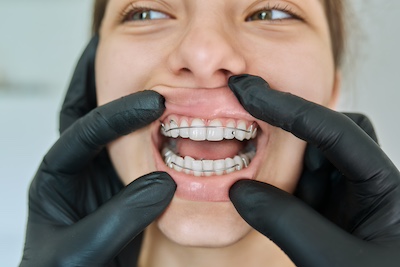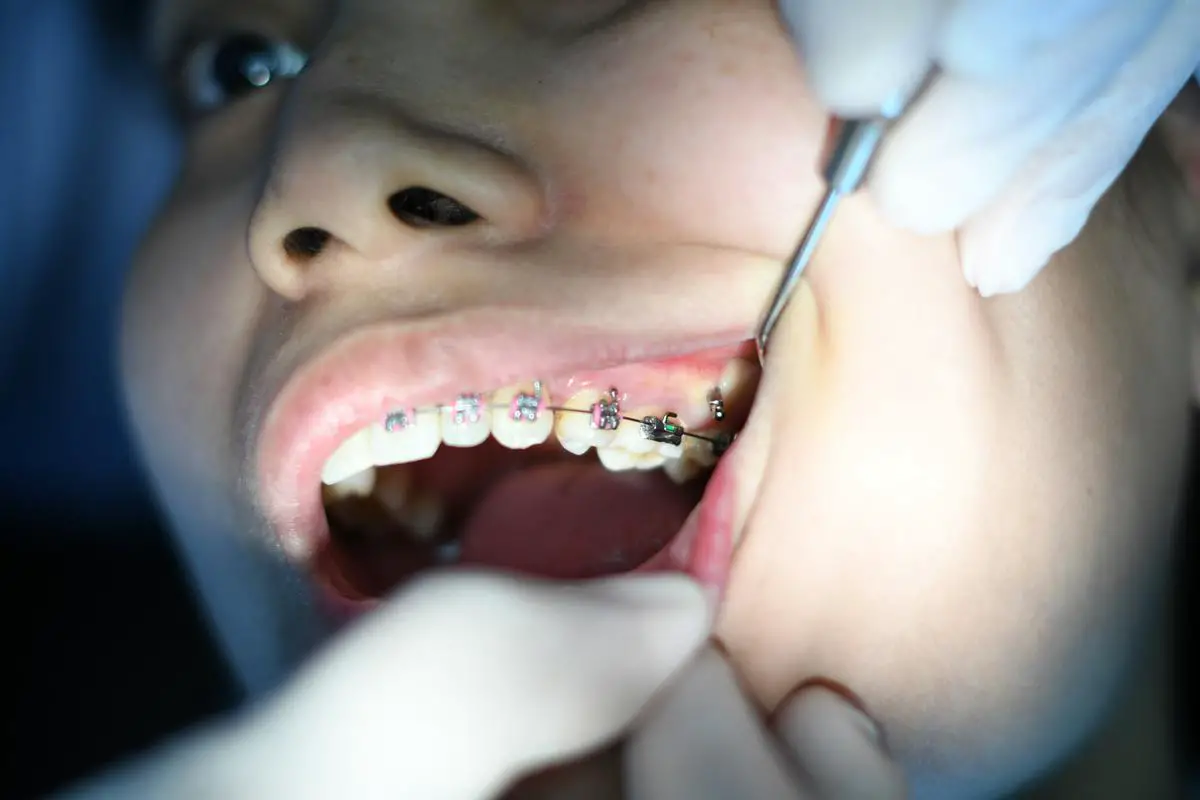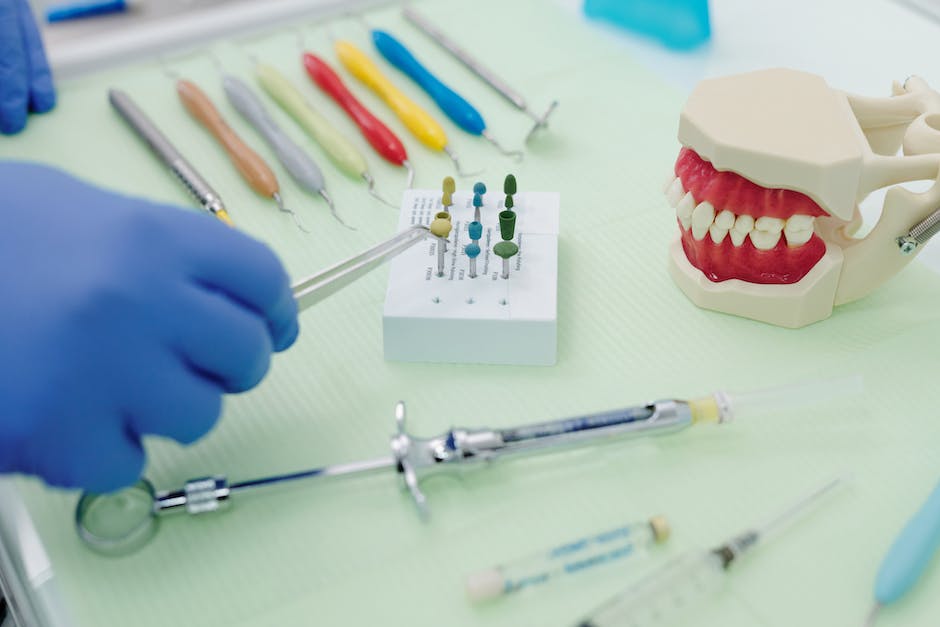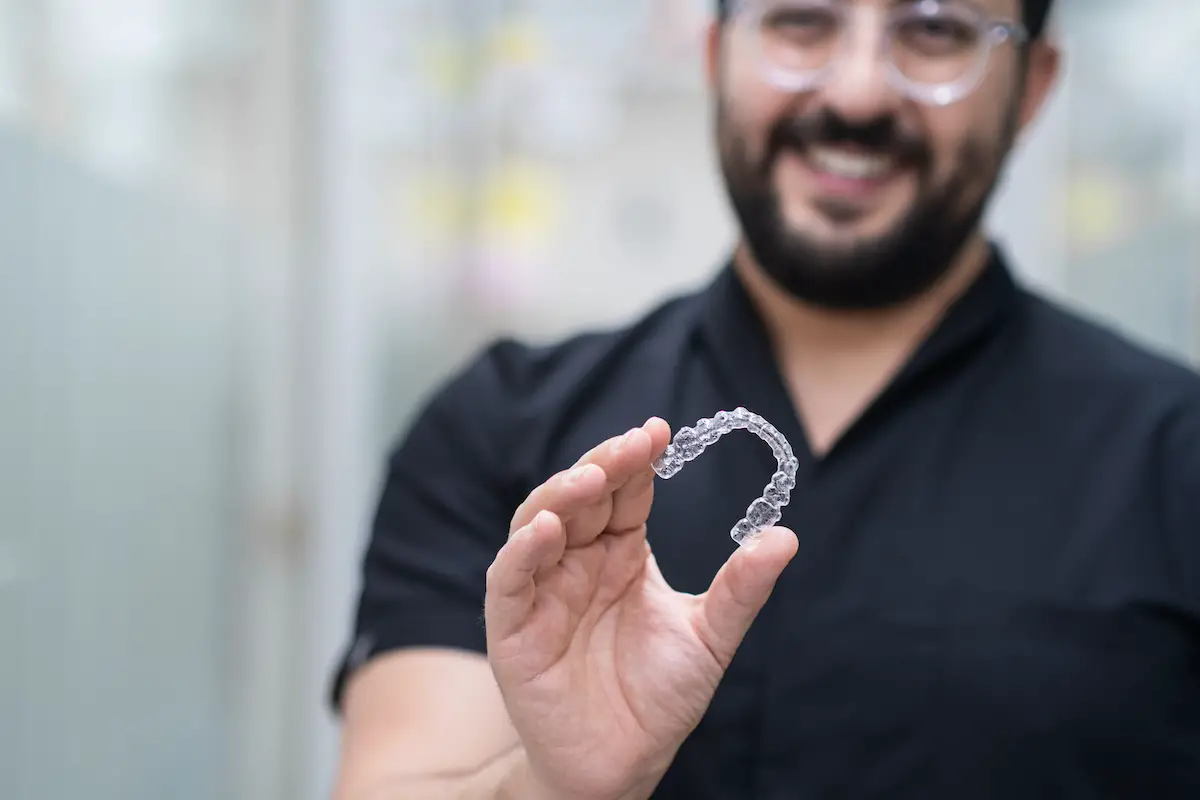Unlocking the secrets to a captivating smile and robust dental health, invisible braces stand at the forefront of orthodontic ingenuity, especially for those grappling with the challenges of a narrow jaw. With the convergence of advanced biomechanics and next-generation materials, these clear aligners offer a bespoke solution that caters to the unique contours of restricted dental arches.
In this post, we will venture into the depths of how invisible braces apply precise forces to reposition teeth within the spatial constraints of a narrow jaw, the innovative designs and materials that enhance their performance, and the discerning clinical insights that guide their success.
As you embark on this enlightening journey through the realm of invisible orthodontic treatment, prepare to engage with groundbreaking evidence and multidisciplinary expertise. Together, they sculpt the pathway toward achieving an optimally aligned, functional, and aesthetically pleasing smile.
Biomechanics of Orthodontic Treatment in Narrow Jaws
The structure of the human jaw is a fundamental aspect in the field of orthodontics, where precision and an in-depth understanding of craniofacial anatomy are paramount. A narrow jaw – clinically referred to as a narrow maxilla or mandible – presents unique challenges that require careful consideration during the planning and implementation of orthodontic treatments.
The biomechanics of orthodontic interventions must be tailored to overcome the limitations and address the specific needs that arise from such anatomical variations.
Firstly, a narrow jaw constricts the available space within the oral cavity. This spatial limitation often leads to dental crowding, where the teeth are misaligned due to insufficient room along the dental arch.
Crowded teeth contribute not only to aesthetic concerns but also to a plethora of functional issues, including malocclusion, impaired oral hygiene, and an uneven distribution of masticatory forces. The biomechanical objective in treating a narrow jaw is to expand the dental arch and provide adequate space for tooth alignment.
Arch Expansion
Arch expansion is often achieved through orthodontic appliances such as expanders. These devices exert gradual lateral forces upon the bones of the maxilla or mandible. The concept hinges upon the principle of bone remodeling – the ability of bone to adapt to sustained pressure by resorption and deposition, effectively increasing the width of the jaw.
This process must be meticulously monitored as over-expansion or excessive force application can lead to undesirable outcomes, including periodontal damage or instability of the results.
Furthermore, the narrowness of the jaw impacts the mechanics of tooth movement. Traditional braces, which use brackets and wires to apply force to the teeth, may be challenged by the limited space.
A biomechanically informed approach utilizes lighter, consistent forces that respect the delicate balance of the periodontal ligament – the soft tissue that connects the tooth to the jawbone. Excessive force can lead to root resorption or compromised blood supply, illustrating the need for precision in force application.
Skeletal Expansion
In addition to mechanical treatment, skeletal expansion may also be indicated, particularly in cases where the narrow jaw is a result of an underdeveloped maxillary or mandibular bone. In such instances, surgical intervention, such as a maxillary expansion surgery, may be combined with orthodontic therapy to achieve the desired expansion of the jaw.
Therefore, it is apparent that treating a narrow jaw requires a multifaceted approach that is sensitive to the biomechanical complexities of the craniofacial region.
The overarching goal is to not only improve dental alignment but also to establish a harmonious balance within the oral cavity that promotes long-term functional stability and optimal oral health. The scientific and clinical community remains committed to advancing the understanding of these intricate biomechanical interactions, thus enhancing the efficacy of orthodontic treatment for individuals with a narrow jaw.

Design and Material Considerations for Invisible Braces
Invisible braces represent a significant technological advancement in the realm of orthodontic treatments, offering both aesthetic appeal and effective alignment correction. When considering their application for individuals with a narrow jaw, key design, and material considerations become paramount to ensure the effectiveness and safety of the treatment.
Selecting Appropriate Materials
Selecting appropriate materials is critical for the development of invisible braces. These materials must maintain their structural integrity while being flexible enough to adapt to the complex geometry of a narrow jaw.
For instance, medical-grade plastic polymers, such as those used in the production of clear aligners, are designed to exert specific amounts of pressure on teeth. These polymers must be biocompatible to minimize the risk of allergic reactions and be resistant to the corrosive environment of the oral cavity.
Design Specifications
In terms of design, the geometry of invisible braces requires meticulous planning and customization. Advances in computer-aided design (CAD) and 3D printing technology have enabled the production of patient-specific aligners that can accommodate the unique contours of a narrow jaw. This customization extends to not only fitting the surfaces of the teeth but also programming the sequence of movements that each tooth must undergo.
Interproximal reduction (IPR) is sometimes executed to create more space within a narrow jaw without significantly affecting the periodontal health of the teeth. When IPR is applied, the design of the invisible braces must be adjusted accordingly to take the minute alterations in tooth shape and dimension into account.
The design also must reflect a deep understanding of the biomechanical forces involved in tooth movement. To achieve the desired teeth position without overloading the periodontal ligament, the brace design must distribute force evenly across the dental arch. This is especially crucial in narrow jaws, where there is limited space to work with, and any excessive force can lead to patient discomfort or suboptimal results.
Making Adjustments for Invisable Braces
Monitoring and iterative adjustments are crucial components of treatment with invisible braces. Therefore, the design must facilitate easy removal and replacement as the patient’s teeth move and their jaw shape changes. The material should also be durable enough to withstand such repeated handling without losing its effectiveness or becoming deformed.
Lastly, considerations for patient comfort cannot be overstated. Invisible braces, while needing to be effective in their corrective action, also must not hinder the patient’s ability to speak or maintain oral hygiene. Thus, the material’s edges require careful finishing to prevent gum irritation, and the design must allow for normal brushing and flossing to maintain periodontal health throughout treatment.
In conclusion, while the design and material considerations for invisible braces in patients with a narrow jaw are complex, they are essential in providing a treatment that is not only cosmetically pleasing but also functional, comfortable, and tailored to the unique intricacies of the individual’s oral anatomy.

Clinical Outcomes and Limitations
It is essential to highlight the clinical outcomes patients with a narrow jaw can expect when opting for invisible braces, as well as to consider the inherent limitations of this orthodontic approach. Invisible braces, synonymous with clear aligners, have risen in popularity due to their aesthetic appeal and convenience.
Their efficacy in treating various dental malocclusions, including conditions associated with a narrow jaw, warrants comprehensive analysis.
Expected clinical outcomes for those utilizing invisible braces involve a progressive correction of dental alignment within the limits of the jaw’s current structure. The subtlety of invisible braces offers an aesthetically pleasing option for patients, which, in turn, may enhance the patient’s compliance and satisfaction with the treatment.
Clear aligners can produce effective results in expanding the dental arch and managing mild to moderate crowding within a narrow jaw; however, it is not without its caveats.
Adherence to Treatment Regimen
Adherence to the treatment regimen is paramount. Invisible braces demand a high level of commitment from the patient, as the success of the treatment is contingent upon consistent wear for the prescribed duration, typically 20-22 hours a day. Unlike traditional braces, the removable nature of clear aligners places the onus of discipline directly on the patient.
Accurate Fabrication of Invisable Braces
Accurate fabrication and fit are other crucial factors influencing clinical outcomes. With advanced computer-aided design and 3D printing capabilities, aligners can be customized to the unique topography of an individual’s oral anatomy.
This customization is crucial, particularly in instances where interproximal reduction is employed to create space for tooth movement in a narrow jaw. The iterative adjustments necessary for treatment require precision in aligner design to maintain effectiveness.
However, limitations do exist in the use of invisible braces for patients with narrow jaws. When considering significant skeletal discrepancies, clear aligners alone may be insufficient due to their inability to produce the magnitude of force necessary for drastic bone remodeling. In such cases, adjunctive surgical interventions may be considered to facilitate the desired expansion in jaw width.
Potential for Gum Irritation
Additionally, while invisible braces are generally less invasive and more comfortable than conventional options, they might present challenges such as the potential for aligners to cause gum irritation if not designed with patient comfort in mind. Maintenance of oral hygiene also becomes a salient concern given that aligners cover the teeth and may trap liquids and food particles against them.
Moreover, the material’s durability and elasticity must be balanced to withstand oral forces while providing enough flexibility to be repeatedly removed and worn throughout the treatment duration. This demands the utilization of advanced medical-grade plastic polymers that are both biocompatible and resistant to the harsh oral environment over an extended period.
In conclusion, while invisible braces offer a palatable alternative to traditional orthodontic appliances in managing malocclusion associated with a narrow jaw, they require meticulous planning, patient adherence, and recognition of their limitations. Patients must be apprised of these facets to harbor realistic expectations and contribute actively to the success of their treatment.
Case Studies and Evidence-based Approaches
Contemporary orthodontic practice is increasingly informed by meticulous research and clinical evidence, particularly in the application of inconspicuous orthodontic devices like invisible braces. These transparent aligners have revolutionized the field, offering patients with narrow jaws a treatment option that is not only cosmetically appealing but also grounded in scientific rigor.
To elucidate the efficacy of these braces, one must delve into the heart of case studies that document nuanced clinical scenarios. These reports present comprehensive data on patient outcomes, detailing the intricacies of treatment progression for individuals with narrow jaws. Case studies enable practitioners to glean insights into successful strategies, predict potential complications, and refine their treatment protocols accordingly.
Leveraging Statistical Analysis
Evidence-based approaches leverage statistical analyses and controlled trials to distill orthodontic principles into effective treatments. By intimately understanding the natural history of the narrow jaw condition, as well as the physiological responses elicited by orthodontic interventions, clinicians have sculpted treatment regimes that optimize the function and aesthetics of the dental arch.
The alignment of teeth within a constricted jaw space necessitates a delicate balance between therapeutic goals and the preservation of periodontal health.
When applying invisible braces to a narrow jaw, the translation of theory to practice is paramount. These aligners, tailored through digital impressions and 3D modeling, are crafted with the expectation of exerting calibrated forces to coax teeth into alignment without imposing excessive stress upon the surrounding structures.
Iterative adjustments of the aligners are based on careful monitoring, ensuring that the imposed biomechanical forces fall within a therapeutically beneficial range.
Patient Engagement
Patient engagement is a critical component of this treatment paradigm. The transparency and removability features of the braces demand a high degree of patient responsibility. Adherence to wearing schedules and diligent oral hygiene is vital to prevent exacerbation of any underlying periodontal issues, which may be more pronounced in a patient with a narrow jaw. Education and motivation thus become instrumental for favorable outcomes.
While invisible braces proffer an advanced solution for many orthodontic dilemmas, they are not without their limitations, particularly when addressing significant skeletal discrepancies that may be inherent to the narrow jaw. In such instances, a multifaceted approach, potentially integrating surgical options, might be warranted.
Nonetheless, for cases within the treatment scope of these braces, evidence-based protocols informed by robust case studies have established them as a reliable and effective modality in managing the narrow jaw condition.
The synthesis of clinical experience, scientific evidence, and technological advancement underpins the judicious use of invisible braces. It is this amalgamation of knowledge that guides the orthodontic community in enhancing the quality of life for patients through improved dental health and esthetic harmony.

Multidisciplinary Perspectives in Invisable Braces Treatment
The approach to treating orthodontic conditions, such as a narrow jaw, transcends the mere alignment of teeth; it involves a synergy of multidisciplinary perspectives to ensure holistic patient care. In the case of invisible braces, this multidisciplinary approach plays a vital role in the customization, application, and success of the treatment.
Integrating Dental and Medical Expertise
The treatment of a narrow jaw with invisible braces demands the integration of dental knowledge with broader medical expertise. This includes understanding the patient’s overall health, potential allergenic reactions to materials, and the biological responses of bones and tissues during orthodontic procedures.
Dental professionals collaborate with various medical experts, including oral surgeons, to ascertain a comprehensive view of the patient’s health and custom-tailor the best possible treatment plan.
Psychological and Social Considerations
Embracing multidisciplinary perspectives also involves acknowledging the psychological and social factors affecting patient compliance and satisfaction. Orthodontic treatments, particularly with invisible braces, often appeal to patients due to their aesthetic advantages.
A deep understanding of patient motivations, concerns, and behavioral patterns is fundamental when designing the treatment plan to ensure adherence to the corrective regimen.
Nutritional Guidance for Optimal Results
Moreover, the alignment and adjustment of the jaw using orthodontic treatments are complemented by nutritional counseling. Guidance on food choices that support orthodontic treatment helps prevent damage to the braces while also promoting gum health and reducing the risk of cavities.
Nutritional experts provide valuable input in creating an appropriate diet plan that accommodates orthodontic devices and contributes to overall oral health.
The Role of Technology in Modern Orthodontics
Technological advancements are integral to the administration and success of orthodontic treatment with invisible braces. Innovations in digital imaging, CAD/CAM systems, and computerized modeling have revolutionized the precision with which treatments are executed.
Dental professionals work hand in hand with engineers and technicians to design custom aligners that accommodate the unique dimensions of a narrow jaw, utilizing state-of-the-art manufacturing techniques.
Patient Education as a Fundamental Component
Patient education is another multidisciplinary aspect that is crucial to the success of invisible braces in treating narrow jaws. It is not sufficient for patients to receive treatment passively.
They must actively engage in learning about their condition, the intricacies of their treatment plan, and the mechanisms by which invisible braces effect change in their oral structure. Dental practitioners often work closely with educators and counselors to develop informative materials and programs that help patients take ownership of their treatment process.
Collaborative Treatment Planning
Lastly, the collaboration between orthodontists, general dentists, and other specialists ensures a synchronized treatment plan that addresses both immediate cosmetic concerns and long-term oral health. This collaboration is particularly important when invisible braces are part of a larger interdisciplinary treatment plan, which may involve other reconstructive or cosmetic dental procedures.
In conclusion, embracing multidisciplinary perspectives in the treatment of a narrow jaw with invisible braces enriches orthodontic practice by combining expertise from different fields to guarantee a patient-centered, comprehensive treatment outcome. It is the culmination of this collective wisdom that fosters innovation and delivers care that meets the multifaceted needs of patients.
Using Invisible Braces to Correct a Narrow Jaw
Embarking on the journey to a perfect smile with a narrow jaw is an intricate endeavor, one that calls for a keen understanding of the mechanics and materials at play.
As we have navigated through the various facets of invisible braces in the treatment of narrow jaws, from the biomechanical considerations and design intricacies to the real-world outcomes and collaborative care, we have uncovered a landscape rich with innovative possibilities and diligent research.
The stories etched in the case studies and somber lessons from clinical experiences have not only deepened our comprehension but also illuminated the path for future advancements.
The odyssey of orthodontic innovation continues, and with it, the promise of more refined solutions that will further uplift the lives of patients worldwide, ensuring that even the most challenging dental profiles are met with the transformative power of a smile truly aligned.








